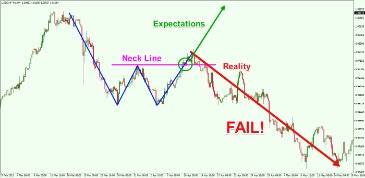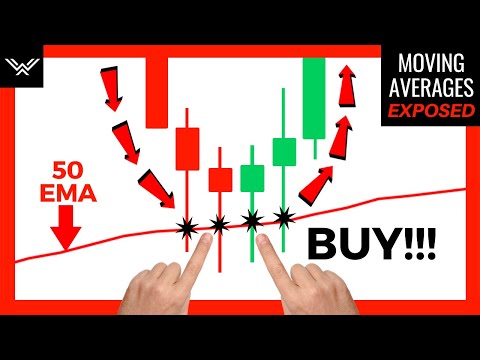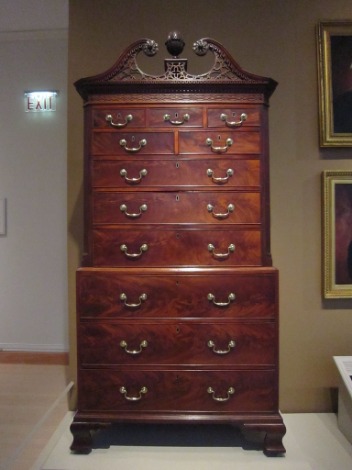
Stocks of large companies usually have daily volatility of about 5-10%, mid-caps and low-liquid stocks – 20%, 50%, or even more than 100%. Volatility represents the price movements of a currency due to the buy and sell orders. The more buying or selling pressure there is, it will quickly move to the appropriate direction. This is of course mostly visible during important economic events of the related economies. Wars (military invasions), uprisings, riots, and other forms of civil unrest count as one of the major causes of volatility.
Short covering meaning – FOREX.com
Short covering meaning.
Posted: Wed, 31 May 2023 07:00:00 GMT [source]
Will you get out of a non volatile currency pair and take the loss or will you stay in the trade and wait for the price to move in your direction. Inflation is one of the factors that affect the currency exchange rate. It refers to the rise in the prices of commodities and services. Financial https://g-markets.net/ markets never stand still, they are constantly moving. To understand this, just look at the chart of any financial instrument – prices are either rising or falling and quite often trading sideways. For assessing the market activity and price dynamics, there is an indicator called volatility.
British Pound vs. Australian Dollar
It caused a sudden decrease in the country’s GDP, which affected the currency value. The lockdown caused drastic economic changes around the world. The growth of a nation’s economy will determine the value of its currency in the global market. It may be the simplest of these three technical indicators used in studying the market.
However, they all refer to the same market phenomenon, which is frequent or severe fluctuations in the value of different currency pairs and the exchange rates between them. Volatility tells you how drastically a certain currency has moved within a timeframe. This helps you adjust your trading systems and trading times to perfectly suit your trading style. Usually, a Forex trader looking for low and steady returns and less risk would prefer to trade low volatility pairs. On the other hand, traders that can accept higher risk would prefer to trade high volatility pairs to profit from the volatile price movements.
As you can see in the example above we had 70 pips average on each day. Candles you can see on the previous days are larger so the number of pips as an average number would be even higher. You can see on the chart in the left upper corner where it says EURUSD Daily. Another thing you need to know is that the price could be volatile without moving UP or DOWN like on the image above.
Volatility
These usually include a pairing of two “safe haven currencies”. There are three kinds; determined by the level of activity or demand of trade. If the inflation rate is going up, the central bank will raise the interest rate. And higher interest rate will decrease the value of a currency.

While he was talking about markets in general, Buffett who is also known as the Sage of Omaha, could well be talking about volatility in the forex markets. Market volatile meaning in forex fluctuations can indeed be your friend when forex trading online in the global market. But you have to know how to harness it and make it work in your favour.
Trade war
Because it is straightforward, it is commonly used by traders, new and old. It refers to your exposure to a situation that might lead to a loss or lesser profit. Because of its unpredictable nature, implied volatility is hard to estimate. So, it is safe to conclude that there is a high volume of trades every day.

However, breaking into more volatile options can be an excellent way to diversify your portfolio. With the right risk management, these top 10 most volatile currency pairs could have huge potential if you play your cards right. One factor which you should always consider when choosing your currency pair is volatility. When a country’s currency becomes weaker, they can gain a larger market share in terms of exports. Foreign buyers are likely to take advantage of the relatively low prices to buy more stock than they otherwise would, which can stimulate the country’s economy.
Are you trading with an award-winning, global broker yet?
Volatility is bad if the trader is unable to prepare for the sudden changes. Whereas, lower volatility will mean safer trades but lower profits. The current global situation has restricted export activities.
- Whereas it’s common for businesses to feel the effects of currency volatility, these effects can often be felt at a personal level too.
- Chart above shows you a pair on a five minute chart, M5, and how the pair looks like when the market moves sideways and when there is no volatility.
- As the markets are closed for the weekend, you won’t see the movement until it reopens on Sunday at 5 pm EST when the forex market opens for the week.
- When a currency pair does not fluctuate as much, it is said to have low volatility.
- The best traders, those in it for the long-term, will always have rules and strategies to use when price action starts to become unpredictable.
- The term “volatile” in the forex market refers to the degree of uncertainty or instability in the currency exchange rates.
For example, an investor might buy the euro versus the U.S. dollar (EUR/USD), with the hope that the exchange rate will rise. Assuming the rate moved favorably, the trader would unwind the position a few hours later by selling the same amount of EUR/USD back to the broker using the bid price. The difference between the buy and sell exchange rates would represent the gain (or loss) on the trade.
The value of a currency pair is determined by how many units of the quote currency are equal to 1 unit of the base currency. It is an area on your chart where a candle jumps from one price to an entirely unrelated price without anything in between. Then, all of a sudden, the market might amble its way back to the weekend closing price. To learn more about our world-class money transfer service, feel free to visit our About page, or browse our list of supported currencies. And if you’d like more expert advice on managing your finances or building your international business plan, we have a range of articles available at our dedicated CurrencyTransfer blog.
Forex why do trades keep going against me?
High volatile currency pairs bring more risk because more pips can be won, but also lost in a single trade. The British Pound cross rates tend to be the most volatile ones among the major currencies. The Canadian Dollar is another «risk-on» currency and is heavily influenced by the direction of the oil price, as Canada is a major oil producer. If markets move into «risk-off» mode and at the same time, oil prices are falling, the Canadian Dollar could come under significant pressure. On the other hand, the currency tends to thrive during times when traders are seeking risk and commodity prices are rising as well. As a forex trader, you should always take into account volatility when opening a position.
- After this, create a trading plan specific to your chosen currency pair.
- Traders make money on price movements, that‘s why instruments with high volatility are more preferable for trading.
- The British Pound cross rates tend to be the most volatile ones among the major currencies.
However, the key to it is finding the level you want to exploit and set up the order, keep your stops and targets within the range of spikes. Implied volatility – this refers to the method of predicting future prices by assessing options price changes. A rising options price suggests increasing volatility, and vice versa. It is important to note that for a market to be considered volatile, there should be a price movement (rise or fall) by more than 1% over an extended period.
Forex Leverage and Trade Size
Positive economic news can lead to higher prices and increased volatility, while negative economic news can lead to lower prices and decreased volatility. Another factor that can contribute to volatility in the forex market is market sentiment. Market sentiment refers to the overall mood or attitude of traders towards a particular currency pair. When traders are bullish, or optimistic, about a currency pair, it can lead to higher prices and increased volatility. Conversely, when traders are bearish, or pessimistic, it can lead to lower prices and decreased volatility. Although historically not one of the most volatile currency pairs, the British pound and the Euro have become increasingly volatile since the Brexit vote in 2016.
Options traders try to predict an asset’s future volatility, so the price of an option in the market reflects its implied volatility. As covered above, there are various technical indicators you can use to anticipate market sentiment and make predictions about future price direction. While not definitive, using charts and indicators will help you formulate your strategy and choose when to trade. This is extremely useful for calculating stop distances and position size.